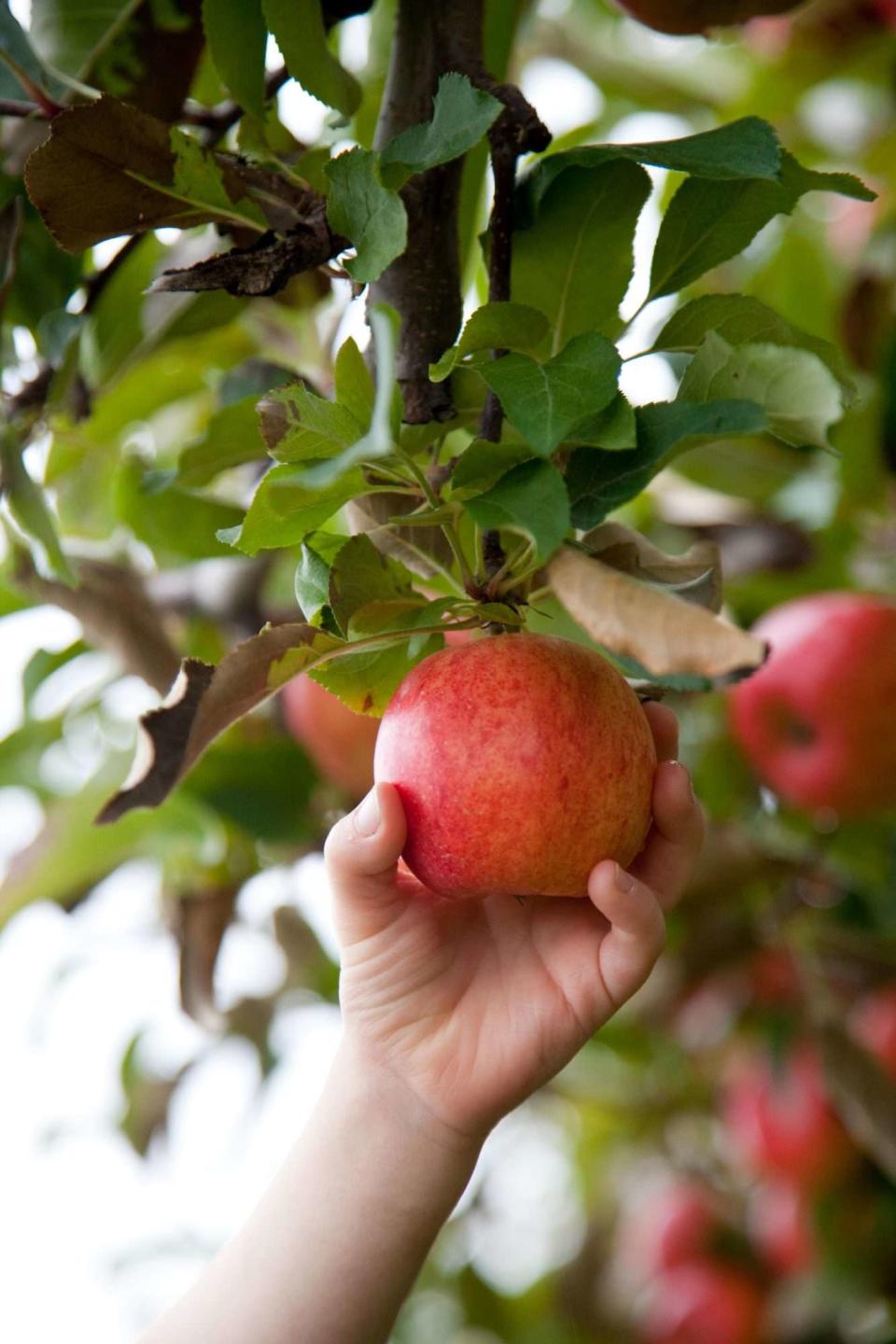How and When to Prune Apple Trees
These must-know tips for pruning apple trees will help you harvest more fruit.

When pruning an apple tree, a little effort goes a long way. By nature, apple trees are inclined to produce copious amounts of leafy growth and few fruits. Yearly pruning to thin out the canopy and make way for more fruit will flip the script and yield a generous harvest. Just 30 minutes of time is usually all that's needed to direct the growth of a dwarf apple tree for another year of good fruit production. Researchers have found that regular pruning not only results in more fruit, but it also promotes sweeter, more flavor-rich fruit as sunlight reaches into the canopy, fully ripening the fruit. Use these 8 tips for pruning apple trees and you'll get your sweetest harvest yet.
1. Make It an Annual Affair
Yearly pruning promotes yearly fruit production. Removing large quantities of branches—one-third or more of the overall tree—will cause a tree to produce lots of leafy growth and no fruit. The leafy growth is the tree’s response to stress; the tree is attempting to regain its energy producing structures so it can sustain itself. Avoid the stress response and lack of fruiting altogether by making small pruning cuts each year rather that heavy pruning every few years.
2. Watch the Calendar
Late winter or early spring is the very best time to prune an apple tree. Aim to prune trees when the coldest weather is past but before the trees begin growing in spring. Wounds will heal quickly in spring and the bare branches allow you to easily see the tree’s structure. Don’t prune in fall or early winter. A cold winter can cause severe damage to recently pruned areas.
3. Look for Diseased, Dead, or Crossing Branches
Begin pruning a tree by culling troublesome branches—those that are clearly diseased, dead, or crossing. Diseased branches are identified by growths or sunken areas in the bark. A diseased branch may also be discolored. Dead branches are brittle and break easily when bent. Crossing branches are those that are rubbing on a nearby stem or clearly growing into the path of a desirable stem.
4. Mind the Leader
Most apple trees have a central leader or stem that grows toward the sky. Branches extend from the central leader in whorls to give the tree a pyramid-shape. The central leader provides the main structure or center framework for the tree. Avoid pruning it severely. It can be pruned back by a foot or two if needed to keep the tree small and manageable, but it should not be pruned severely or removed.
5. Let the Light In
Sunlight is an essential ingredient in apple formation. Sunlight must penetrate the tree canopy, reaching buds and then developing fruit to spur the fruit to maturity. Too many leafy branches halt the sunlight and stop apple development. An important goal in pruning fruit trees is to remove excessive leafy growth in the interior of the tree.
Begin by pruning vigorous upright shoots. These are likely watersprouts and do not produce fruit. Get rid of them. Next, prune away branches that are closely spaced, leaving the branch that is growing out (away from the trunk) and is well spaced to nearby branches. Finally, trim away any branches or side shoots that are growing toward the center of the tree.
6. Step Back
Step away from the tree frequently throughout the pruning process. A distant perspective will help you see the overall framework of the tree and what needs to be pruned next. Look at the overall shape of the tree. It should have a loose pyramidal shape. Identify the central leader. Analyze branch spacing, identifying branches that are growing too close together.
7. Plan for 3 Years
Bringing an old, overgrown apple tree back into shape is at least a 3- year process. Begin by identifying the main structure of the tree. Identify the leader and the well-placed branches extending out from it. In year one, remove select branches to open the interior of the tree up to light and air movement. Be careful to remove no more than one-third of the tree’s overall wood. The next year, continue removing excess growth and opening the center to light. In year three, remove the last of the excess large limbs and trim back long limbs to give the tree a pyramidal shape.
:
8. Be Mindful of Angles
The angle a branch extends from the main trunk, or central leader, often determines its strength. A branch extending at a narrow angle, 45 degrees or less, is prone to weakness and breakage. The strongest branches extend from the trunk at about a 60-degree angle. When pruning, look for narrow branch angles and eliminate them when possible. Encourage a wider angle on young branches by wedging a notched stick between the branch and the trunk at the beginning of the season. Remove the spreader stick at the end of the growing season.

